Agroecological garden on the way || Huerto agroecológico en camino
4 comments
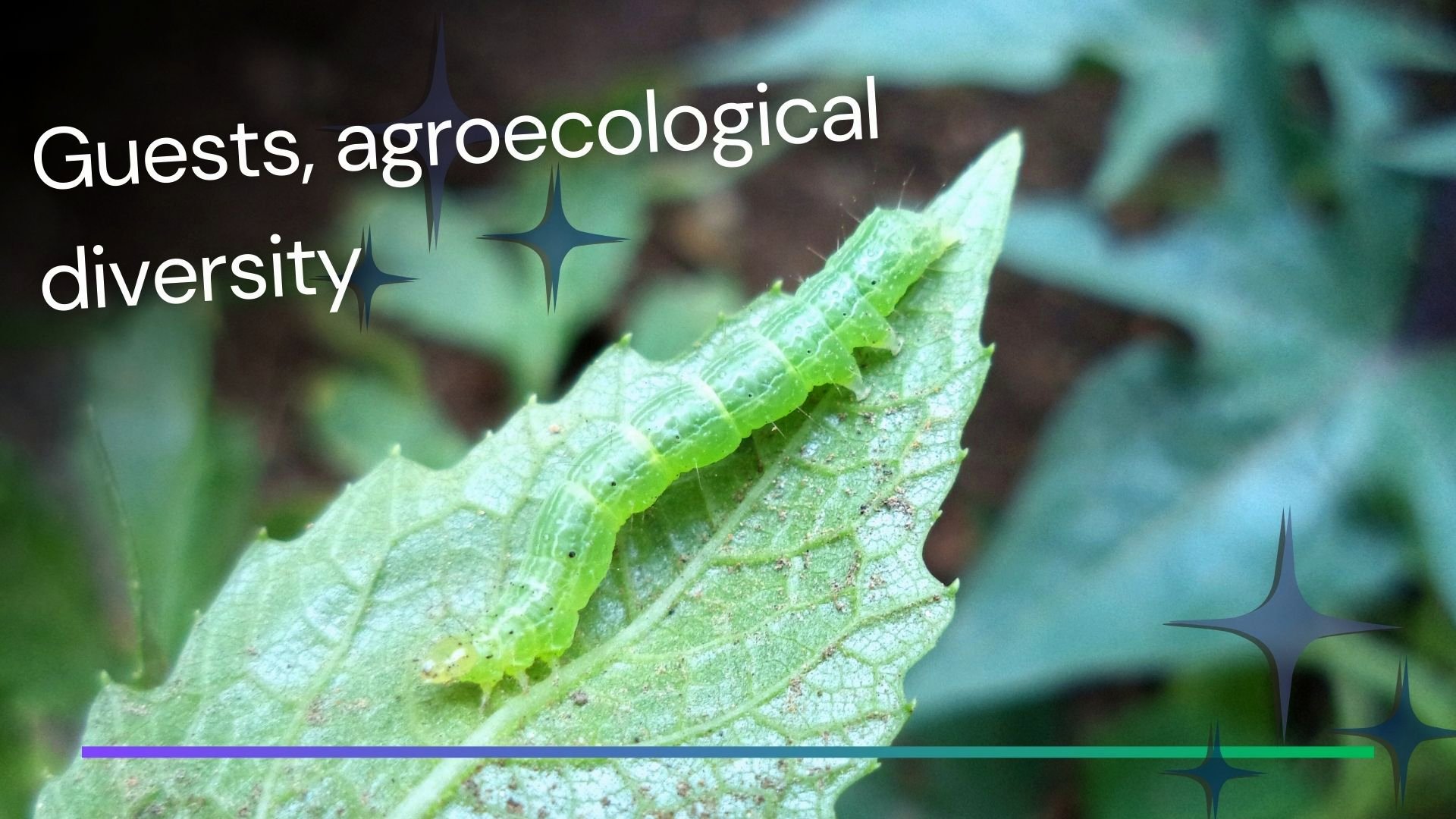
Hi, I hope you are feeling great!
Agroecology is a way of growing food without damaging its environment, but rather improving it and maintaining ecological balance. Here, each organism (micro-organism) plays an important role for its species and its environment.
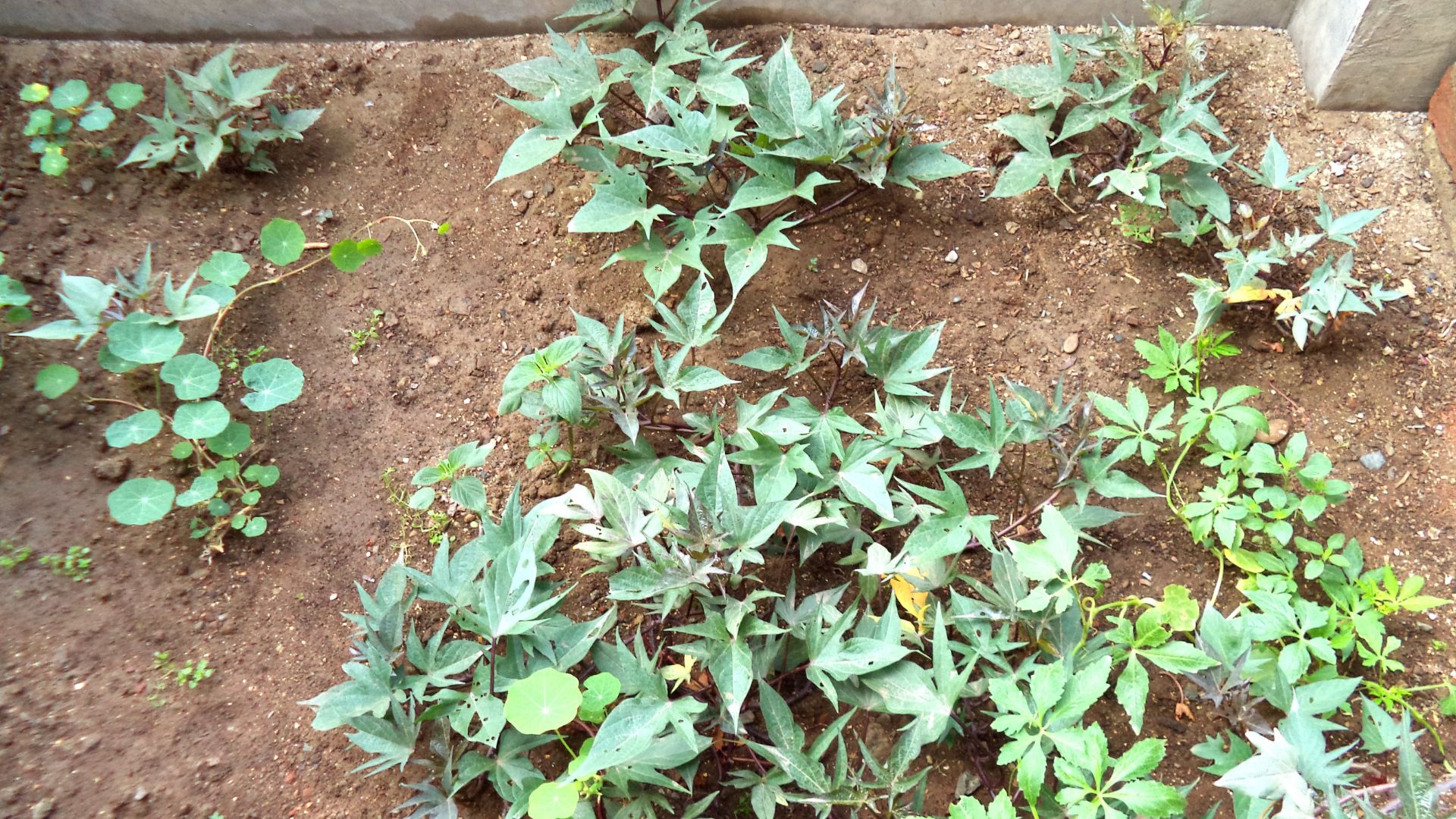
After incorporating organic matter (guinea pig guano), nitrogen, phosphorus and calcium (all from natural sources), my vegetable garden is looking like this. I have planted purple sweet potato (Ipomoea batatas) and Caigua (Cyclanthera pedata) as edible crops.
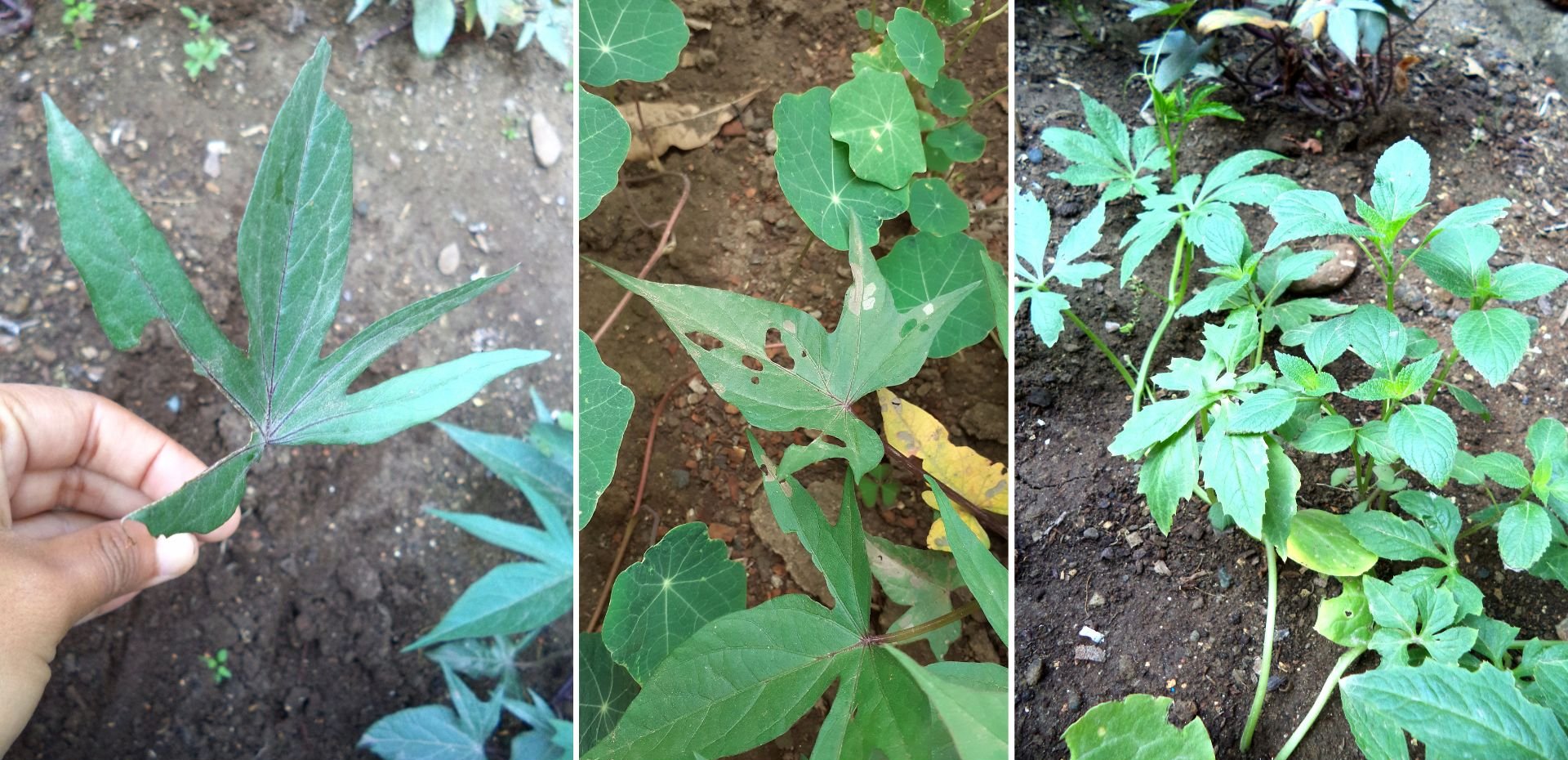
That was during the summer and the guest insects started to appear. Before sowing, there were quite a few earthworms here. For example, the 1st picture is earthworm damage on sweet potato leaves, as sweet potato is a creeping crop. The 2nd and 3rd pictures are false meter worm damage.
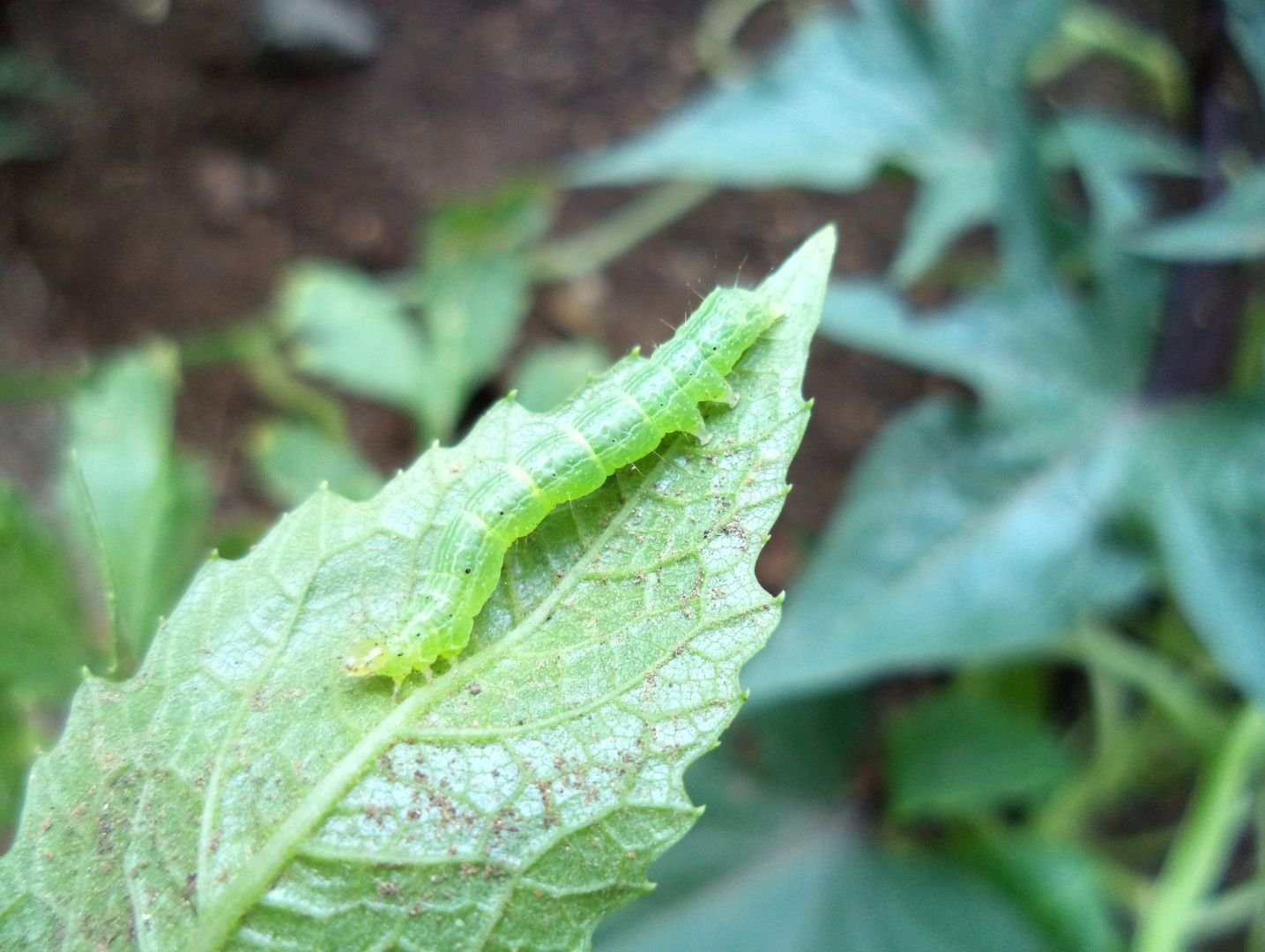

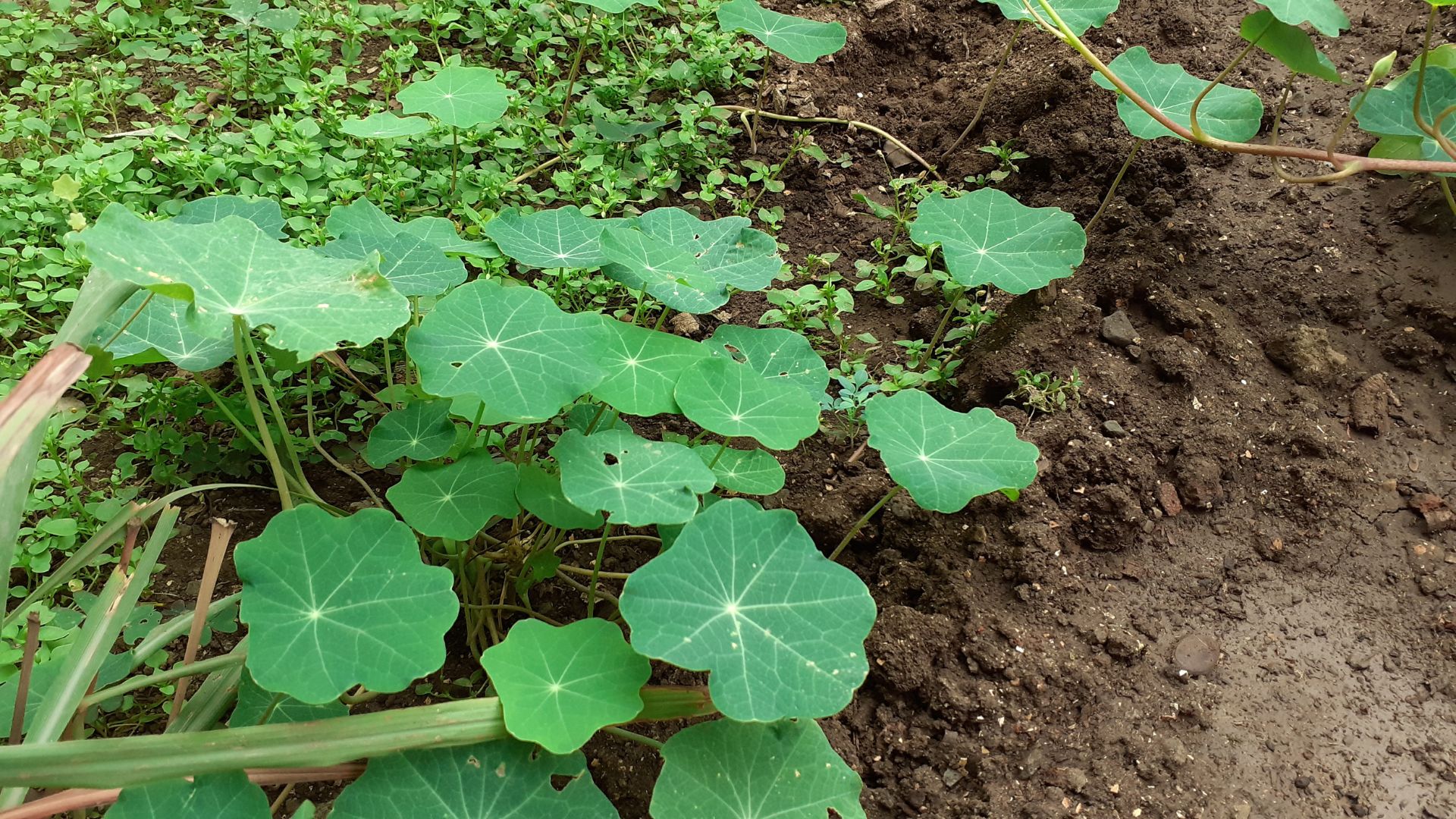
To reduce the earthworm population, I planted Masturtium, Nasturtium or Inca Lettuce (Tropaeolum majus). Its function is as a trap crop, as earthworms love these roots. In addition, it is also creeping and its leaves appear eaten...That indicates to me that earthworm activity and I go there to remove them manually.
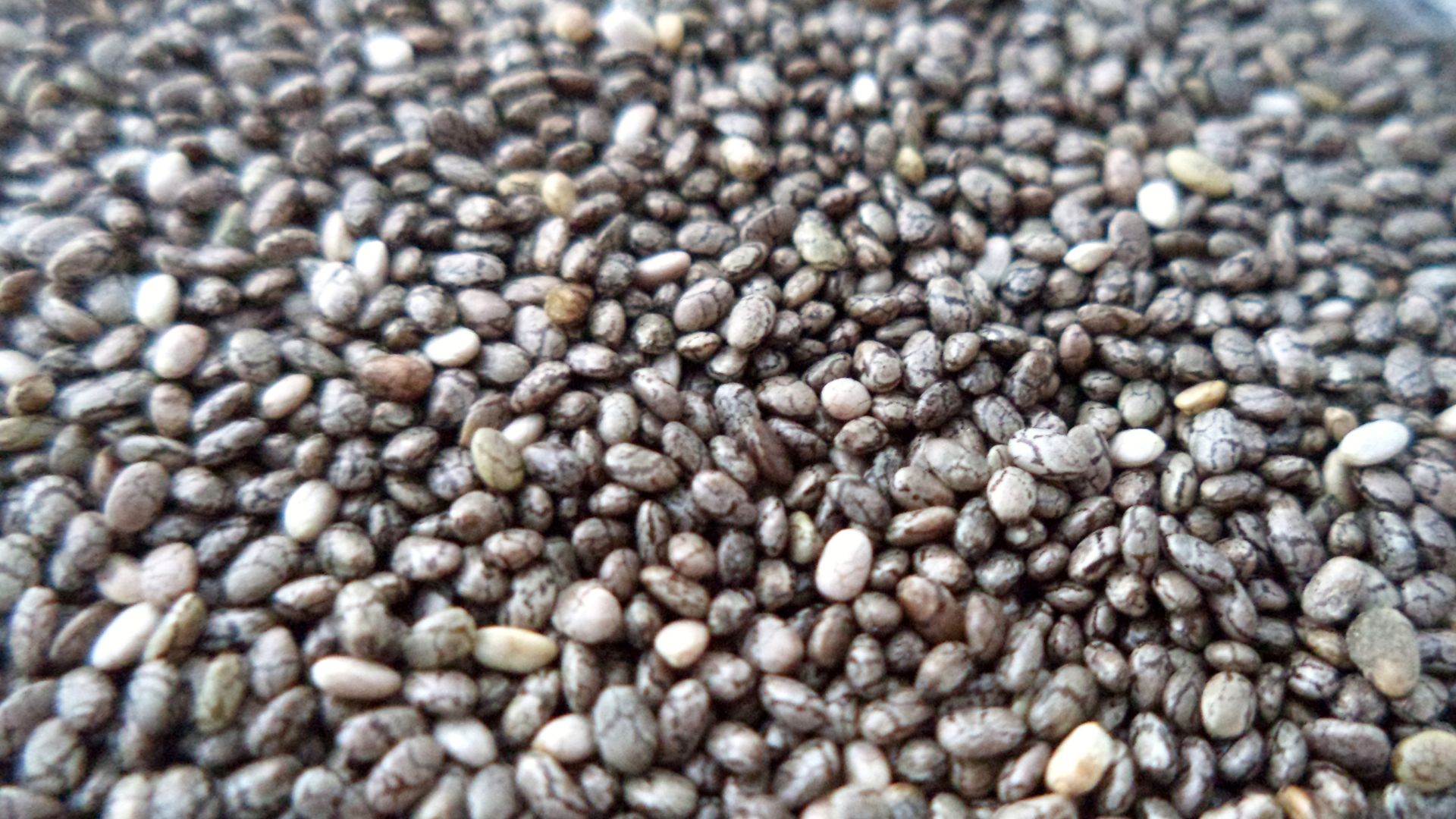

The Chia (Salvia hispanica), is another plant whose roots have substances that are toxic (allelopathic) to earthworms. On the downside, Chia brought in whiteflies and more false mealworms.
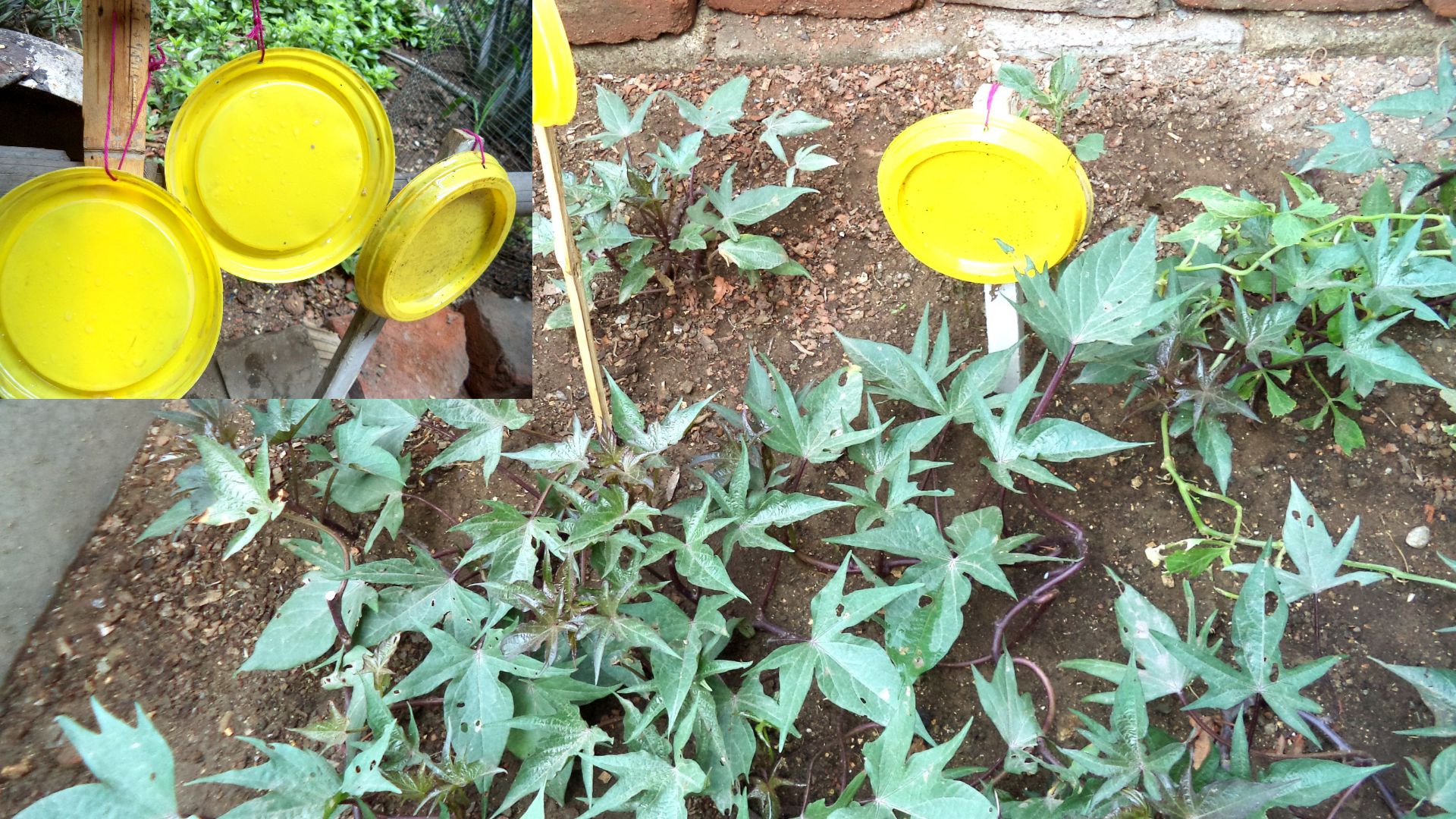
For whiteflies, I used Yellow Traps as a control measure. This consists of placing yellow surfaces (I recycled the lid of the dishwasher) with oil (recycled), so that the flies are attracted to the yellow color and get trapped in the thickness of the oil.
Conclusions
I did consider the earthworms to be a plague because it took me months to get rid of them by hand, with the help of the Mastuerzo and the Chia. Both gave very good results. The yellow traps, I used them for a short period (2 weeks) because I was monitoring and changing the oil every 3 or 4 days.

ESPAÑOL

¡Hola, esto es Waralwa!
La agroecología es una forma de cultivar alimentos sin dañar su entorno, sino mejorarlo y manteniendo el equilibrio ecológico. Aquí, cada organismo (microorganismo) cumple un rol importante para su especie y su entorno.

Luego de incorporarle materia orgánica (guano de cuy), nitrógeno, fósforo y calcio (todas provenientes de fuentes naturales), mi huertito va quedando así. Sembré Camote morado (Ipomoea batatas) y Caigua (Cyclanthera pedata) como cultivos comestibles.

Eso fue durante verano y empezaron a aparecer los insectos invitados. Antes de la siembra, aquí habían bastantes Gusanos de tierra. Por ejemplo, la 1° foto es daño del gusano de tierra en hojas de camote, ya que el camote es un cultivo rastrero. Las fotos 2° y 3°, son daños de gusano falso medidor.



Para reducir la población de gusanos de tierra, sembré Mastuerzo, Capuchina o Lechuga de los Incas (Tropaeolum majus). Su función es como cultivo trampa, ya que a los gusanos de tierra les encantan estas raíces. Además, también es rastrera y sus hojas aparecen comidas...Eso me indica que actividad de los gusanos de tierra y voy allí para sacarlos manualmente.


La Chía (Salvia hispanica), es otra planta cuyas raíces tiene sustancias tóxicas (alelopáticas) para los gusanos de tierra. Lo malo que, la Chía trajo moscas blancas y más gusanos falsos medidores.

Para las moscas blancas, utilicé como medida de control las Trampas amarillas. Consiste en colocar superficies amarillas (reciclé la tapa del lavavajillas) con aceite (reciclado), para que las moscas se sientan atraídas por el color amarillo y se queden atrapadas en el espesor del aceite.
En Conclusión
Los gusanos de tierra si los consideré plaga porque me tomó meses sacarlos de forma manual, con la ayuda del Mastuerzo y con la Chía. Ambos dieron muy buenos resultados. Las trampas amarillas, las usé por un corto periodo (2 semanas) porque iba monitoreando y cambiando el aceite cada 3 ó 4 días.
... Jikisiñkama!
... ¡Nos vemos!
... See you later!.

Comments